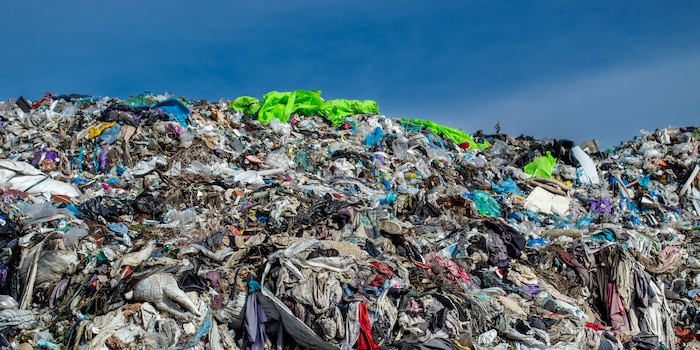
Background information
Zips: an ingenious source of frustration
by Michael Restin

The world's textile waste could have filled 200 Olympic stadiums in 2024. 80 per cent of the discarded clothing ends up in landfill or is incinerated. In an analysis, the Boston Consulting Group identifies the problems, but also the potential.
These figures are not sustainable, but they are disturbing: in 2024, 120 million tonnes of clothing will be thrown away worldwide. By 2030, it could be 150 million tonnes. It would be wrong to talk about old clothes: on average, textiles are only worn seven to ten times and then disposed of. This means they are out of mind - but not out of the world. The Boston Consulting Group (BCG) has analysed this gigantic waste of resources and initially announces little good news.
Even if the brave new world of goods with ocean plastic and eco fibres suggests otherwise, the recycling rate is vanishingly low. According to the BCG, 80 per cent of clothing ends up in landfill or is incinerated - which seems to be the «better» solution between these two evils.
A tonne of incinerated textile waste releases as many emissions as if you flew back and forth between London and New York six times. If the material rots in landfill sites, it produces emissions equivalent to eight such trips. Microplastics are also released into the environment.
Only around twelve per cent of the discarded clothing was reused and less than one per cent was recycled into new fibres, writes BCG. This vanishingly low rate is also due to the fact that only seven per cent of waste can be used as a recycled raw material.
According to the analysis, the material value of waste alone is around 150 billion dollars per year and a quarter of this could cover the material requirements of the 30 largest fashion companies in the world. However, there is no real, functioning recycling system for an industry of this size. Sorting is usually done by hand, which is slow and inefficient.
Another problem identified by BCG is the mixed fibres in many garments, which combine cotton with elastane, for example, and pose major problems for recycling processes on the way to a genuine circular economy. Problems that can be illustrated by the smallest parts such as a zip.
All this makes recycled fibres too expensive to be truly competitive. «These higher prices are due to decades of global supply chains that are optimised for the supply of new materials», the team of authors concludes. In addition, there are the effects of subsidies - and the fact that the environmental damage caused by the production of new materials is not reflected in the price in many cases.
For Europe, the authors see the potential to expand the return and collection systems to such an extent that the collection rate can be increased to over 50 per cent by 2033. Modern, semi-automated sorting systems should be up to 90 per cent more efficient and better able to process this mountain.
In addition, innovations are to be financed, politicians mobilised and consumers persuaded to make even greater use of recycled products. In other words, the full programme, which often fails in reality.
Globally, the BCG team predicts that with a well-functioning circular system, the recycling rate could rise to over 30 per cent - which would mean over 50 billion dollars worth of recycled fibres and create around 180,000 new jobs.
It would be great. Unfortunately, what remains is a gigantic pile of textile waste. Some of which may have been traded in online shops such as Galaxus.
Yes, lots of clothes and countless other items are also sold on Galaxus. But that doesn't stop the editorial team from reporting on topics like this. The world is what it is - it's up to you what conclusions you draw from it. As a company, we are trying to improve. Expanding information on sustainability step by step, promoting the second-hand trade and constantly scrutinising ourselves. You can find more information here.
Simple writer and dad of two who likes to be on the move, wading through everyday family life. Juggling several balls, I'll occasionally drop one. It could be a ball, or a remark. Or both.
From the latest iPhone to the return of 80s fashion. The editorial team will help you make sense of it all.
Show all